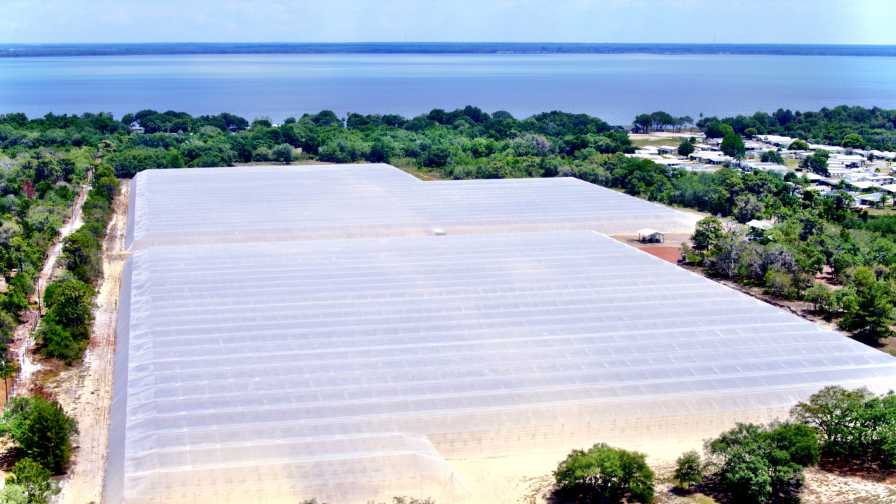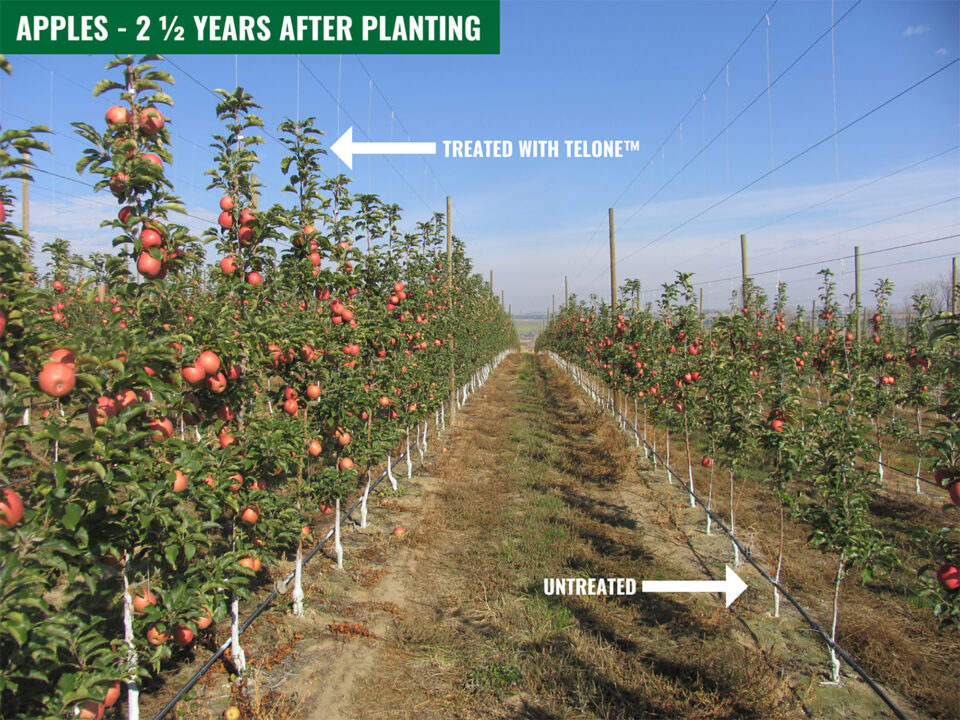Florida Citrus Growers Going Inside to Think Outside the Box

Here’s a bird’s-eye view of Ed Pines’ CUPS plot near Lake Wales, which consists of two, 10-acre structures. Imagine what 120 acres will look like.
Photo courtesy of Ed Pines
Growers are gathered each morning in kitchens, cafes and around pickups contemplating their options: new/more tolerant rootstocks, new/more tolerant scions, new nutrition packages, etc. Florida growers producing citrus for the fresh market are facing more than escalating production costs; they are facing daunting year-round competition in the marketplace. In order to remain viable, they need to do more than keep their financial head above water, they must pack a truly competitive high-quality product. Nothing is the same as it was last year, or five years before that. The chasm between yesterday’s production and today’s reality is wide.
Under Cover Wonder
Past editions of “Citrus Nursery Source” highlighted the Citrus Under Protective Screen (CUPS) projects built by Ed Pines, George Pantuso, and Jerry Mixon. Each of these flow in some measure from the excellent research of Dr. Arnold Schumann, and each of them differ somewhat. Tom Peters was famous for saying “swipe from the best, then adapt.” These CUPS operations are doing just that — adapting and innovating. However, until now, we had not seen a project on a scale that would begin to supply meaningful volume to a Florida packinghouse. CUPS Co-op Inc. is out to change all of that, and with it, the future of Dundee Citrus Growers Association (DCGA).
DCGA CEO Steven Callaham has teamed with EIP Citrus Management to construct a 120-acre CUPS subdivision. CUPS Co-op Inc. will consist of 10 individual screened CUPS structures separated and surrounded by common areas. Though DCGA is developing the project, individual growers will own each structure. The screen co-op with be entirely self-contained, using dedicated equipment and providing cooperative caretaking and maintenance. DCGA will manage the harvesting, packing, and marketing.
Grower/owners will make their own planting decisions based largely on preference and the needs of the packing and marketing divisions. The current economics of CUPS projects dictate the selection of high-value, fresh varieties with the objective of producing fruit of superior quality in an HLB-free environment. It is expected most of the varieties to be planted in the CUPS Co-op will be easy peeling specialty fruit, but not exclusively. The project will break ground this month and plans are to begin planting trees in fall 2018 and produce a limited harvest for the 2020-2021 season.
An Option To Consider
This project represents a bold and impressive step for DCGA and its growers. If this is a success — producing the desired production levels, fruit quality, and profitability — it is conceivable that more such scaled-up cooperative CUPS projects could follow.
The first project is fully subscribed and more growers remain interested. For growers who have struggled to produce the desired quality and production in conventional groves, this looks to be an intriguing alternative.










